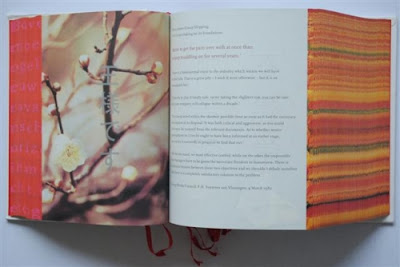Irma Boom
When building book, Boom’s books take on an object-like architectural form. They are to her a unique medium for delivery of information. A thorough reflection of the information contained leads Boom to her design decisions. It is her aim to enhance the readers understanding of content while at the same time creating an object of beauty, with quality and permanence. Just like a building, Boom considers the entire landscape of the book including the edges. She builds three-dimensional models in miniature scale to aid in the development of her books. From typography to material, every detail Boom applies to her projects possesses an underlying logic.
Unconventional typographic trademarks of Boom may include the use of oversized type which successively shrinks from the opening to end of her book. This claims is a way to lure people into reading the introductory pages.
Best Known Book Creations
SHV Think Book 1996-1896
This book was ‘the landmark book’ in Boom’s career. The 2,136 page book was worked on for a span of five years before being published in 1996. Three and a half years were dedicated to intense research in Amsterdam, Paris, London and Vienna. It contains no index or page numbers and is anti-chronological. This was to encourage readers to approach the book without constraints, but rather surprise and discovery. Tulip fields and a Dutch poem were incorporated into the edges of the book, viewable depending on the direction in which each page is flipped. It is an unusually thick book measuring 22.5 x 17 x 11 cm. It started with Boom being asked to ‘look for the unusual’.[1] It was created with the editorial of art historian Johan Pijnappel. Initially there had been consideration in publishing the content as a CD-ROM, but a book proved to be a more timeless and opportunistic option. The book’s cover is in entirely white linnen but reveals a title after frequent use. An alternate version comes in black. Transparent adhesive had been typographically applied to collect dust and finger prints. Creating a blank covered book had alarmed publishers who feared it would not sell. Its production proved to the contrary. It was the book which elevated her to international design stardom. The anniversary book was one of her biggest and communicated a narrative on the history of that company. It was designed to be distributed worldwide, yet Boom has calculated that it will take five hundred years for the book to spread to all the corners of the globe. Four thousand copies were printed in English and five hundred in Chinese. It has been described as an international icon of Dutch design. It is part of the permanent collection of MoMA.
This is a publication that commemorates the centenary of one of the Netherlands’ largest multinationals, SHV. The Dutch public knows very little about SHV or its activities and this object is similarly mysterious. Its pages form a daunting stack of almost ten centimetres. It has no obvious title, no page numbers, no table of contents, no chapters, no index, no colophon. Its chronological structure runs in reverse.The thinkbook is a monument built to withstand time, but in some ways it is like a newspaper. It records the economic history of trade and commerce and, like a newspaper, shows social actions and offers public information about daily life.
Study Task 02 - Stefan Sagmeister
Publication Creations
Sagmeister: Made You Look
Within this publication Sagmeister has created the book known as, 'Made you look' display innovative work that shows graphic design can also be cut to the emotional core. Fully illustrated, with a red PVC slipcase, this monograph covers twenty years of his graphic design and features images from the studio archive as well as specific influences and reference points for his projects and ideas.
When analysing the publication. I believe that this is an excellent book and his range of ideas is fascinating when being displayed on the pages.
The publication of his work really inspires me, to do my publication as it contains his thought process and the amount of effort he puts into every design. The book itself is wonderfully produced, the paper is of good stock and the book is certainly unique.
The publication of his work really inspires me, to do my publication as it contains his thought process and the amount of effort he puts into every design. The book itself is wonderfully produced, the paper is of good stock and the book is certainly unique.









Comments
Post a Comment